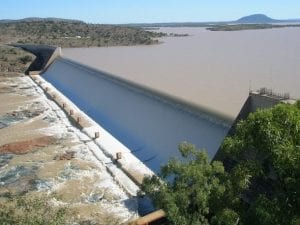Australia’s carbon pricing scheme will have a price floor for three years during the first three years of permit trading. The minimum carbon price starts at A$15/tCO2 in mid-2015. Originally meant simply as a reassurance that prices would not fall to levels that were then considered extremely low, on current expectations the minimum price might well come into effect: today’s forward price for a Clean Development Mechanism (CDM) credit, to be delivered in 2015, is just over five euros or six dollars.
Policy uncertainty in the EU and fears of EU recession has put emissions prices on a rollercoaster ride. There are good reasons not to let the currently depressed European prices fully determine carbon prices in Australia. The price floor aims to provide greater certainty for investors in low-emissions assets within Australia, which will be necessary if the broader goal of cutting domestic emissions is to be achieved.
At the same time though, access to international markets is vital to allow emitters an alternative route to comply with their obligations, to limit the overall cost of achieving Australia’s target, and because it can stimulate climate change investment in developing countries. A well-implemented price floor can hit both goals.
What’s the charge for surrender?
Achieving an effective price floor with open international trading in emissions units is a big challenge for implementation. Essentially what is needed is a fee (“surrender charge”) for the use of cheap international emissions units, making up any gap between the price for international units and the Australian floor price. Emitters (“liable entities” in the jargon) who choose to use international credits to fulfil their Australian obligations will have to pay such a charge if the price of international units is low.
But how to determine that surrender charge? The Clean Energy Future legislation left the details open, to be determined in regulations. At the start of 2012, the government released a discussion paper setting out options for implementation, looking for effectiveness, efficiency and workability. Liable entities seek assurance that they can hedge price risks, while government needs to be sure that appropriate incentives are maintained and that revenues from the sale of domestic permits are safeguarded. Everyone wants minimal complexity. Here is my take on how to do it.
The short answer is that the surrender charge for international emissions units needs to be set on the basis of benchmark market prices for international emissions units at the time of surrender. In other words, what matters is the market price at the time when permits are handed to government to comply with an emissions liability (Option 3 in the government’s discussion paper).
One theoretical alternative would be to base the surrender fee on the actual price paid for each international credit (Option 1). Many liable entities would prefer this option, but it is not suitable. The actual cost of emissions units in private transactions cannot be observed, especially where companies are themselves involved in the actual projects that yield emissions credits as a corollary of physical investments. It would always be to the advantage of liable entities to claim higher prices. Putting reporting issues aside, there would be no incentive to produce or source international emissions reductions at costs lower than market prices.
Another theoretical alternative would be to calculate the surrender fee based on the market price at the time of purchase of an emissions unit or forward contract (Option 2). This is not suitable because of a subtler problem: if market prices rise over time, then liable entities could sell off the units they bought earlier and replace them with new units bought at the same price, and in the process minimise the surrender charge payable. A comparable advantage does not exist when holding domestic emissions permits. Holding international units would be a one-way bet, and market choices would be distorted.
Hedging your bets
So we’re back to computing the charge as the difference between market prices and the floor price at the time of surrender. However this leaves emitters with a financial risk even if they pre-purchase credits or enter forward contracts, because they do not know in advance whether there will be a surrender charge and how much it will be. Many firms will not be so concerned about this in practice, but it could be an issue for some (for example power generators) who like to lock in their input costs a few years in advance.
If there is demand for hedging of the price risk, one would expect that banks will jump in the breach and offer tailored financial products that leave emitters risk free, charging them for the privilege. It is what normally happens in financial markets, and should happen it this case too. However some companies have raised concerns that the market might be too small for financial intermediaries to provide such hedging products, or that they might be provided only at inappropriately high prices.
To provide a backup, government could offer the ability to lock in the surrender charge ahead of the time of permit liability.
The discussion paper proposes that government could make contracts with emitters for the surrender of an agreed amount of emissions units at an agreed future point in time, at a fixed surrender charge based on forward market prices at the time the contract is written (Option 4). Complex as this is, it could work – but only if the contracted surrender charge includes a fee for hedging the risk, or the surrender charge would need to be set at a minimum threshold. Otherwise, there could be a rush on contracts with a zero or near-zero surrender fee, offered when forward prices are similar to the floor price. If zero surrender fee contracts were offered, this would be a one-way bet biasing the choice towards international units. It would also diminish the expected permit price and the amount of fiscal revenue, and crowd out risk management products provided by banks.
A simpler option to allow lock-in of carbon costs would be to allow the early surrender of international emissions units, and up-front payment of the surrender fee. The surrender fee would be determined on the basis of the market price at the time of surrender, the floor price during the chosen year of liability, and an adjustment for the time value of money. This approach is simpler, does not require an observable forward price, and less likely to crowd out private risk management products.
Reserve price
The last piece in this rather somewhat complex mosaic is the reserve price at auction for domestic permits that are issued by the government. The reserve price should be set some level below the price floor. This is the simplest way to make sure that the permit auctions clear, and that the appropriate amount of fiscal revenue is achieved. Otherwise, if the reserve price was set equal to the floor price, any differences between actual prices paid for international emissions units and the assessed benchmark prices could affect the result of domestic permit auctions.
The price floor itself will be upheld through the international surrender charge, not the reserve price at auction.
Quo vadis, price?
While the prospect that the floor price might in fact be binding has focussed the attention of government and industry on implementation, a larger question is lurking: what will happen to the Australian emissions price after 2018? If conditions in international emissions markets by then were still volatile and hostage to unpredictable economic and policy developments in one world region (Europe), then there would clearly be a case for continuing the price floor in the Australian scheme beyond its current three-year expiration date.
On the other hand, if the international market situation was still so unsettled, then one could argue that we are no longer dealing with a transitional problem in international emissions markets. One possible response would then be to simply link to whatever international prices are, as foreseen under the current policy settings. This would mean ditching the ambition to get the domestic price signal more in line with domestic emissions reduction targets. Another possible response would be to more permanently de-couple an Australian carbon price from those in other countries, by going back to the fixed price arrangement that is to be in place from 2012 to 2015.
How this pans out will depend on climate policy settings in other countries, especially on progress with emissions trading schemes in China and other East Asian countries, as well as California, and of course the path that Europe takes. It will also depend on the nature and extent of arrangements for trading emissions reductions with developing countries in our region. And more than anything of course, it will depend on Australia’s experiences with the carbon price, and the domestic politics over the next few years.
Frank Jotzo works on the economics and policy of climate change at the ANU Climate Change Institute.
Further reading:
Jotzo, F. and Hatfield-Dodds, S. (2012), “Implementing Australia’s carbon price floor”, Submission to Australia’s Department of Climate Change and Energy Efficiency, Canberra, February 2012









